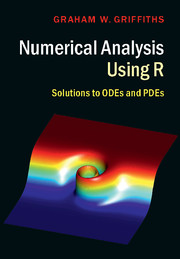Book contents
- Frontmatter
- Dedication
- Contents
- Preface
- 1 ODE Integration Methods
- 2 Stability Analysis of ODE Integrators
- 3 Numerical Solution of PDEs
- 4 PDE Stability Analysis
- 5 Dissipation and Dispersion
- 6 High-Resolution Schemes
- 7 Meshless Methods
- 8 Conservation Laws
- 9 Case Study: Analysis of Golf Ball Flight
- 10 Case Study: Taylor–Sedov Blast Wave
- 11 CaseStudy: The Carbon Cycle
- Appendix: A Mathematical Aide-Mémoire
- Index
- Plate section
- References
11 - CaseStudy: The Carbon Cycle
Published online by Cambridge University Press: 05 May 2016
- Frontmatter
- Dedication
- Contents
- Preface
- 1 ODE Integration Methods
- 2 Stability Analysis of ODE Integrators
- 3 Numerical Solution of PDEs
- 4 PDE Stability Analysis
- 5 Dissipation and Dispersion
- 6 High-Resolution Schemes
- 7 Meshless Methods
- 8 Conservation Laws
- 9 Case Study: Analysis of Golf Ball Flight
- 10 Case Study: Taylor–Sedov Blast Wave
- 11 CaseStudy: The Carbon Cycle
- Appendix: A Mathematical Aide-Mémoire
- Index
- Plate section
- References
Summary
INTRODUCTION
One of the great scientific endeavors of the twenty-first century is the concerted effort by international research groups to understand how the global climate is changing. There is general agreement that sustained emissions of carbon dioxide into the atmosphere as a result of anthropological activities is the main cause of rising carbon dioxide (CO2) in the atmosphere. Increased levels of CO2 results in more heat, in the form of infra-red radiation, being trapped in the atmosphere—the so-called greenhouse effect. This additional heat tends, over time, to increase the global temperature. Thus, the rising concentrations of CO2 in the atmosphere is a prime candidate for the cause of climate change, which is predicted to increase weather extremes, melting of glaciers and the rise in global sea levels [IPCC-07].
This case study is an attempt to illustrate some of the methods used to study climate change using a relatively simple model consisting of a system of algebraic and differential equations. We restrict our discussion to the major physical processes in the carbon cycle, with the associated equations and solution methods being explained in some detail.
THE MODEL
The mathematical model used here is based on that developed by James Walker [Walk-91], which has also been featured elsewhere to demonstrate numerical procedures [Mol-05]. However, the scope has been extended to include detailed representation of airgas exchange between atmosphere and ocean, improved seawater chemistry calculations, including pH levels, and the inclusion of basic radiation calculations for the atmosphere. We will use the model to illustrate the main processes involved when large quantities of CO2 are emitted into the atmosphere. The model consists of three main reservoirs: the atmosphere, surface water of the oceans and ocean deep water. The calculations attempt to predict how fossil fuel emissions result in higher concentrations of CO2 in the atmosphere and how a large fraction of these emissions is absorbed into the oceans. The effect of increased levels of CO2 is shown to increase absorption of terrestrial infra-red radiation by the atmosphere and, hence, a corresponding rise in the effective global temperature of the Earth. The main model parameters are detailed in Table 11.1.
Although this model is extremely simplified, it does bring out the salient features of the effect of increasing levels of carbon dioxide emissions.
Information
- Type
- Chapter
- Information
- Numerical Analysis Using RSolutions to ODEs and PDEs, pp. 539 - 584Publisher: Cambridge University PressPrint publication year: 2016
